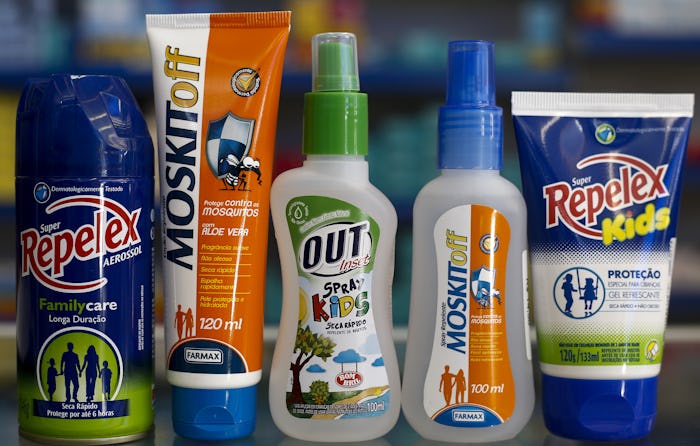News

How To Apply Mosquito Repellent & Sunscreen The Correct Way
These days it sort of feels like trying to figure out how to ward off mosquito bites is a full time job. With the Zika threat moving closer to home all the time, parents and expectant mothers in particular are trying to stay ahead of the mosquito bite game. What was once a minor irritation at picnics and around the bonfire has now become a bona fide threat, thanks to the Zika virus primarily passing through the bite of an infected Aedes variety mosquito. So perhaps important to update ourselves with a little refresher in how to apply mosquito repellent and sunscreen the correct way.
The Center for Disease Control and Prevention describes Zika as;
Zika virus disease is caused by the Zika virus, which is spread to people primarily through the bite of an infected mosquito (Aedes aegypti and Aedes albopictus). The illness is usually mild with symptoms lasting up to a week, and many people do not have symptoms or will have only mild symptoms. However, Zika virus infection during pregnancy can cause a serious birth defect called microcephaly and other severe brain defects.
There is no known vaccine for the Zika virus, and while it does not pose a great threat to healthy adults (it generally just presents with regular flu-like symptoms like muscle ache, fever, rash, and conjunctivitis (red eyes), it can be particularly dangerous for expectant mothers. The virus can be passed in the bloodstream from the mother to the fetus. Which has made a proper mosquito repellent an absolute necessity for pregnant moms this summer.
One of the first things you should know when applying mosquito repellent is that it should be applied AFTER your sunscreen. The CDC suggest putting on sunscreen first and does not recommend any of those combination repellent/sunscreen products, because sunscreen and mosquito repellents need to be reapplied at different rates.
The CDC also recommends using mosquito repellents that have been registered with the EPA. (Environmental Protection Agency).
Of the products registered with the EPA, those containing DEET, picaridin, IR3535, and some oil of lemon eucalyptus and para-menthane-diol products provide longer-lasting protection.
Always read the label of the product you are using for information on how often to reapply (typically, repellents with a higher potency won't need to be reapplied as often) and follow these precautions as recommended by the EPA:
- Apply repellents only to exposed skin and/or clothing (as directed on the product label). Do not apply repellents under your clothing.
- Never use repellents over cuts, wounds or irritated skin.
- Do not apply to eyes or mouth, and apply sparingly around ears. When using repellent sprays, do not spray directly on your face—spray on your hands first and then apply to your face.
- Do not allow children to handle or spray the product. When using on children, apply to your own hands first and then put it on the child. Avoid applying repellent to children’s hands because children frequently put their hands in their eyes and mouths.
- Use just enough repellent to cover exposed skin and/or clothing. Heavy application does not give you better or longer lasting protection.
- After returning indoors, wash treated skin with soap and water or bathe. This is particularly important when repellents are used repeatedly in a day or on consecutive days.
- If you (or your child) get a rash or other reaction from a repellent, stop using the repellent, wash the repellent off with mild soap and water, and call a local poison control center for further guidance. If you go to a doctor, it might be helpful to take the repellent with you.
Even when wearing mosquito repellent and sunscreen, try to wear light-colored, loose clothing and avoid standing water whenever possible.
Happy spraying!